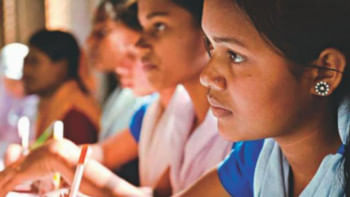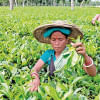A blueprint from India for women's economic empowerment

Throughout my career, I have seen many examples of triumph against the odds – extraordinary accomplishments that often begin with a small group of individuals seeking to solve a problem. In the best cases, local communities, government, and the private sector align and invest in programmes and policies that create more opportunities for these groups to flourish.
The extraordinary success of women's self-help groups in India represents one of the best-case outcomes. Established by women determined to build a brighter future for themselves and their families, these groups have thrived thanks to innovative financial and infrastructure support from the Indian government. With over 80 million women participating in 7.5 million such groups, India is fostering the world's largest community development programme, which is now a key component of the country's economy.
Women, especially in rural areas, face gender-based barriers to participating fully in their communities and building a livelihood. Many are unable to open a bank account or access credit and are dependant on informal loans from relatives, friends, or money lenders. Moreover, traditional family structures and social norms may constrain women from engaging in activities necessary to start or expand a small business.
Self-help groups were first formed in the mid-1980s to address these barriers by providing access to savings and credit so that women could earn a livelihood and lift themselves and their families out of poverty. The results speak for themselves: women's self-help groups have contributed to India's extraordinarily sharp reduction in poverty, from 55.1 percent to 16.4 percent (415 million people), over the last 15 years.
Initially, new groups were dependant on members, though often impoverished, pooling what little money they had to get started. The Indian government stepped in to alleviate this hardship by providing unsecured loans without the need for a formal, registered business entity. Importantly, these loans are offered at a very competitive interest rate of 12 percent, which drops to seven percent if a group repays its loans within 30 days of the due date. With this support, the average self-help group was able to borrow around INR 200,000 (USD 2,500) each, and in 2021 the limit for collateral-free loans was increased from USD 10,000 to USD 25,000.
Over the past decade, more than USD 60 billion has been made available to self-help groups in India and, cumulatively, women in these groups have saved an estimated USD 6 billion. Access to low-interest loans continues to help an increasing number of women create sustainable sources of income, accumulate assets and savings, and build financial security. And individual group members are building more than their financial skills; they are also raising their self-confidence and influence within the community.
For example, a self-help group in Chak Singar Barari village in Bihar state was able to structure their enterprise so that each member is sent home with INR 3,000-4,000 per month. And each woman has her own story. Sunila Devi enrolled her children in private schools, Chitrekha Devi is working toward a bachelor's degree, and Pushpa Devi has started her own ambitious business renting mobile sound systems, which allows her to employ others.
Now multiply those stories by millions, and you can begin to grasp the full effects of these groups. As each woman contributes more to the household income, she gains more say in household decisions. And collectively, they show what is possible when one of the most essential challenges to gender equality – increasing women's economic power – is addressed.
Ultimately, we know that increasing a woman's economic power bolsters her personal agency and empowers her to play a greater role in her family and in her community. India's government-supported self-help groups demonstrate the transformative effects of policy initiatives that are designed to meet the needs of marginalised women. The task now is to replicate this success.
The goals should be clear: to make credit accessible and affordable, build women's financial skills and credit history, and strengthen their financial security. And the various players must be resolute in their support. The closer you look at the details of the self-help groups in India, the more you see the dedication it took from all stakeholders to bring together the people, resources, and tools needed to succeed at this scale. Government agencies at both the federal and state levels were involved, along with banks and other financial institutions, researchers, and an extensive network of non-government and voluntary organisation partners working at the grassroots level in communities across India.
This formula of determination, collaboration, and political will can be applied to other stubborn barriers to gender equality. One of the more persistent challenges I hear from women, most recently during a visit to Dakar, Senegal, is that entrepreneurs also need business development services, skills-building, and access to markets and value chains. India's programme shows that this is feasible: Currently, about 20 percent of self-help group members have these additional supports, and efforts are underway to promote women-owned cooperatives and businesses.
Everyone deserves the chance to live a healthy and productive life. My resolution for this year is to remain inspired by the determined efforts of individuals and by our collective capacity – as India's self-help groups' remarkable success have demonstrated – to innovate as we strive for a healthier, happier, more equitable world.
Anita Zaidi is president of the Gender Equality Division at the Bill & Melinda Gates Foundation.
Copyright: Project Syndicate, 2023.
www.project-syndicate.org
(Exclusive to The Daily Star)

 For all latest news, follow The Daily Star's Google News channel.
For all latest news, follow The Daily Star's Google News channel. 










Comments